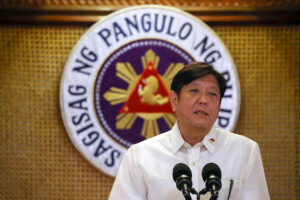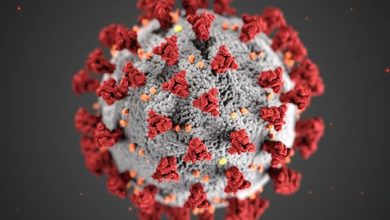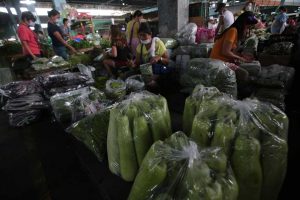Expectations on a SONA

A little history of the State of the Nation Address (SONA) by the President of the Philippines to Congress (from the Official Gazette):
The State of the Nation Address or SONA is delivered by the President of the Philippines every year. In it, the Chief Executive reports on the state of the country, unveils the government’s agenda for the coming year, and may also propose to Congress certain legislative measures. The SONA is a constitutional obligation, required by Article VII, Section 23 of the 1987 Constitution:
“[T]he President shall address the Congress at the opening of its regular session.”
Article VI, Section 15 prescribes that the Congress “shall convene once every year on the fourth Monday of July for its regular session.”
The first SONA was delivered by President Manuel L. Quezon during a special session of the National Assembly on Nov. 25, 1935, in fulfillment of the mandate under the 1935 Constitution to give a report of “the State of the Nation” to Congress on its opening session. After 1935, the opening session of each Congress changed date several times, and succeeding SONAs followed the opening of Congress for the particular year before it settled to the every-fourth Monday of July schedule under the 1987 Constitution.
There have been 84 SONAs (including today’s SONA by newly elected President Ferdinand R. Marcos, Jr.), delivered by 15 presidents since Manuel L. Quezon, in their terms of office. Two presidents after Quezon had no SONAs: Jose P. Laurel, who served under the Japanese-installed interim government in 1943; and Sergio Osmeña who served in the continued Commonwealth government from 1944 to 1946, just before the granting of independence to the Philippines by the United States of America on July 4, 1946.
Note that President Ferdinand E. Marcos, Sr. delivered his SONAs on each January of his first elected four-year term 1966 to 1969, and three SONAs for his subsequent re-elected term until he declared Martial Law on Sept. 21, 1972, whereupon there was no reason to do a SONA, because there was no Congress that represented the people to whom he would have addressed his state of the nation address. (The 7th Congress on its 3rd Session for the year 1972 was aborted by Martial Law.) Under his 1973 Constitution, Marcos did five annual talks to the people on the anniversary date of Martial Law, Sept. 21, from 1973 to 1977.
The Interim Batasang Pambansa (Interim National Assembly) was the legislature in Marcos’ time, inaugurated on June 12, 1978, and standing to June 5, 1984. It was a transitional legislative body mandated by the 1973 Constitution for the shift from a presidential to a semi-presidential form of government. Between and including June 12, 1978, and July 22, 1985, Marcos Sr. delivered another eight talks, five of which were defined as SONAs, at the new Batasang Pambansa complex in Quezon City. It was not until July 27, 1987, that the 8th Congress opened, 15 years after the shutting down of the 7th Congress by Marcos’ declaration of Martial Law. Corazon C. Aquino, president after the EDSA Revolution that ousted Marcos, made her first SONA before the 8th Congress that year, pursuant to the 1983 Constitution that restored full democracy to the Philippines.
And today July 25, 2022, the 84th SONA is addressed to the 19th Congress by the 17th President of the Philippines, Ferdinand “Bongbong” R. Marcos, Jr. It is 37 years and two days from when his father, Ferdinand Sr., delivered his last SONA on July 22, 1985, before his fall from power in 1986. Marcos Sr. delivered a total of 20 SONAs in his time.
In a dizzying fast-forward cum flashback, the Batasang Pambansa built by Marcos Sr. 44 years ago (1978) is the same venue for the first SONA of Marcos Jr. (noted by CNN Philippines News July 22, 2022). The plenary hall was recently renovated and refurbished, at a cost of about P100 million, in time for Marcos Jr.’s first SONA. It can now seat some 350 solons with the physical distancing requirements of the long-staying COVID-19 pandemic (Manila Bulletin, July 20, 2022).
The frenetic security preparations for the SONA might show some paranoia over what could physically go wrong on such a grand occasion. From the 15,000 security personnel utilized to secure the inauguration of President-elect Ferdinand “Bongbong” Marcos, Jr. on June 30, less than a month ago, Metro Manila police chief Maj. Gen. Felipe Natividad said the figure for the SONA is now at almost 22,000 security personnel in order to maximize protection of the event (mb.com.ph, July 16, 2022). But an instinctive collective anxiety rises above the basic concern for the safety of the president and the VIPs. The inauguration was victorious jubilation (for the 31.5 million voters who made Marcos Jr. win) while the SONA is about the expectations of 115 million Filipinos for their survival and quality of life — for the short and medium term of the six years incumbency of the president, and for the long term as the future will evolve from the successes and failures of the years under the leadership of the new president.
“Samahan niyo po ako at pakinggan ang estado ng ating bansa at ang mga plano at mithiin natin bilang isang sambayanan para sa mga susunod na taon (Join me and listen as I talk about the state of our country and our plans and aspirations as a nation in the succeeding years),” Marcos Jr. said in a Facebook post published July 17 (The Philippine Star, July 19, 2022).
He is expected to enumerate his priority bills and to ask Congress to pass measures that will help his administration conduct its programs. Economic managers hint that the President will also present the details of the government’s medium-term fiscal framework, cutting the budget deficit and reducing the debt-to-gross domestic product ratio from 63.5% as of the first quarter of 2022 to 60% by 2025. The economy is expected to grow by 6.5% to 7.5% by year-end 2022 and by 6.5% from 2023 to 2028. Marcos Jr. aims to reduce poverty incidence to 9% and to elevate the country to upper middle-income status, where per capita income for Filipinos is at $4,046 by the end of his term (Ibid.).
Marcos Jr., having chosen to take personal and official management of the Department of Agriculture, promises to increase food production and decrease food importations. He said he will strengthen the Philippines’ value chain to address a food crisis that he said may affect the Philippines in the next two quarters. He will work on food security by increasing the production of rice, corn, and livestock while ensuring that their prices remain affordable.
“I will get it done, no excuses from me,” President Marcos, Jr. said at his inaugural speech on June 30. “You picked me to be your servant, to enable changes to benefit all. I fully understand the gravity of the responsibility that you’ve put on my shoulders. I do not take it lightly, but I am ready for the task,” Marcos, Jr. said (newsinfo.inquirer.net, June 30, 2022).
“I watched a man who saw what had been achieved since independence in a land of people with the greatest potential for achievement and yet they were poor. But he got this done,” the newly elected president said, without mentioning the name of his father (Ibid.).
And the collective consciousness of the expectant Filipino is sucked into dazed memories of past SONAs when presidents thumped their chests for claimed victories, promising more conquests for the people and for the country. The stupor from cloying rhetoric may have deadened discernment of issues and the distortion of facts — even the revision of history.
What can really be expected from a SONA?
Amelia H. C. Ylagan is a doctor of Business Administration from the University of the Philippines.




